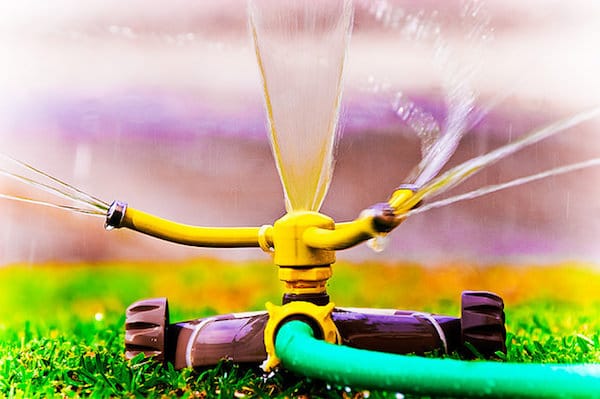
There’s a drought in British Columbia and you’ve no doubt heard about the municipal regulations banning watering your lawn. ‘Water shaming’ is now a thing, with neighbours informing on each other for putting out the sprinkler for a few minutes to try to salvage their grass. That’s just common sense, right? No rain means we’ve got to save all the water we can for higher priorities. Except, in this case, common sense isn’t right – and the science around grass lawns points to a more balanced approach to watering.
In a CBC interview this week, Alan White of the Canadian Nursery Landscape Association points out that giving your lawn just an inch of water a week is enough for it to survive through a dry time like this. Indeed, a well-maintained lawn can go up to 21 days without watering. At a time of drought, it’s certainly not necessary to maintain a lush green lawn that could double for a golf course – but letting it die off can actually make our dry, hot conditions even worse.
“A healthy lawn… can help moderate the problem of the drought,” White says, noting that turf grass filters our air, acts as a carbon sink and essentially plays an important role in urban infrastructure that most folks don’t even think about.
A healthy and living, growing lawn provides 10 times the benefit of a tree. “Your average 2,000 square foot lawn produces enough oxygen for four people, which is the equivalent of 80 trees.” Even better, it doesn’t take long to produce and maintain a resilient, dense ground cover; a tree takes up to 30 years to provide the same effect.
As global warming is on everyone’s mind in these hot, dry conditions, comparatively fewer know that a green urban landscape can moderate the city’s temperature by up to 20 degrees, fighting the heat island effect that tends to be attracted by people, concrete and asphalt.
When our browned-out lawns go past the point of no return, they actually start releasing carbon back into the atmosphere and absorbing heat, compounding the problems we’re already having.
Why haven’t urban planners and politicians, much less your average citizen, paid attention to these factors? We agree with White that there’s a very mechanical way of looking at how we run a city, filtering air and water with high technology; few realize that we can use our lawns as a filter and lungs of a city, cleaning the air and recapturing water back into the landscape.
Instead of seeing our grass lawns as kind of vanity, cosmetic projects that enhance curb appeal and not much else, we can see them as an essential part of our green infrastructure. It’s an effective moderator of the environment that’s easy to install, grow and maintain.
Maybe it’s time our city planners, neighbours and media started talking about how we’ve been getting it wrong with short-sighted water restriction policies. Again, we’re not talking about showing off green lawns in a drought – but keeping a vital piece of our green city spaces alive and working for us instead of against us.
Order fresh sod now or request a custom quote for your project.
Save with a Yearly membership. Custom fertilizer program. Fertilizer, topsoil, seed delivered to your door before you need it. Don’t forget, we will remember for you!
Western Turf Farms Abbotsford
39183 No.5 Road Abbotsford, BC V3G 2G3
Western Turf Farms Langley
7880 240 Street Langley, BC V1M 3P9
© Copyright 2025, all rights reserved by Western Turf Farms. By using our website you agree to our Disclaimer and Privacy Policy.